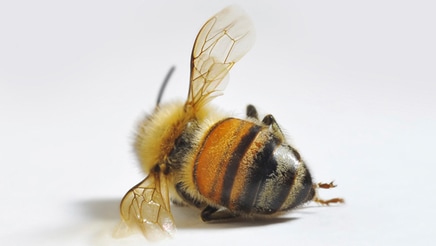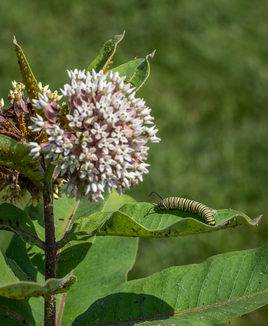Research Documents Neonicotinoid Threat
|
Researchers continue to explore the relationship between neonicotinoids and beneficial insects, including bees. In early May 2017, the Garden Club of America sent out an Alert to its membership to be aware that some Milkweed (Asclepias spp.) plants and/or seed sold in stores and nurseries have been pretreated with neonicotinoids and thus will harm the very species that gardeners, homeowners and others are striving to attract and support. When purchasing milkweed, always ask if the plants or seeds have been pretreated with neonicotinoids (aka neonics).
WGC members please look for additional information in the Member Content area regarding this important Alert. |
The Xerces Society has generated a number of informative publications for those who wish to delve more deeply into the science behind the issue. Please take a look at the following to learn more:
Rusty Patched Bumblebee added to Endangered Species List
On March 21, 2017 the Rusty Patched Bumblebee (Bombus offinis) was officially added to the Endangered Species List by the US Fish & Wildlife Service, a first time occurrence for a bee species and yet another indication of the ongoing troubling trend for pollinators in general. While this particular species is still found in Massachusetts, it is believed to be extirpated in Connecticut. The listing signals deepening difficulties for pollinators that provide crucial ecosystem services. Read more about the species below:
National Plan for Pollinators Released
On June 22, 2016 the White House released the Pollinator Partner Action Plan, a strategy to boost pollinator health and habitat. This endeavor follows the 2014 formation of the White House's Pollinator Health Task Force and the subsequent Task Force Strategy that was released in May 2015 (please refer to the next news item below). And while some recommendations have been strengthened and thus represent a good step forward, further actions will be necessary to ensure the continued recovery of many pollinator species. Check out the full report:
Pollinator News from the Center for Food Safety

As noted in the June 2015 WGC Newsletter, reprinted below is a report from the Center for Food Safety (CFS) on a recent White House Task Force report on the development of a strategy to protect pollinators. CFS is a national non-profit public interest and environmental advocacy organization working to protect human health and the environment by curbing the use of harmful food production technologies and by promoting organic and other forms of sustainable agriculture.
POLLINATOR PLAN AIMS HIGH, BUT FALLS SHORT.
The White House Pollinator Health Task Force (WHTF) has just released its strategy to address the threats to bees, monarchs and other pollinators. While the Task Force has developed positive, far reaching goals for honey bees, monarch butterflies and other pollinators, the plan is unfortunately far too weak to actually accomplish those goals.
We think the White House can do better.
The Good: The plan calls for reducing honey bee colony losses during winter to no more than 15 percent within 10 years; increasing the monarch butterfly population to 225 million butterflies in the overwintering grounds in Mexico by 2020; and restoring or enhancing 7 million acres of land for pollinators over the next 5 years.
As part of the plan, EPA will also speed up the reviews of several bee-toxic neonicotinoid pesticides and prohibit foliar sprays of acutely toxic pesticides while managed honey bees are present for pollination services. Other highlights in the WHTF strategy include the need to assess wild bee population declines and to expand pesticide risk assessments to include additional species and the long-term impacts of pesticide exposure to these species.
The Bad: While the plan focuses heavily on improving pollinator habitat, it is blind to the fact that new habitat will simply become contaminated by insecticides still heavily in use, ultimately harming pollinators. We can’t just plant more wild flowers near crop land and expect insecticides to stop being a problem. Similarly, while efforts to restore milkweed habitat for monarchs are important, without addressing the agricultural practices responsible for the eradication of milkweed, monarch populations will not rebound to resilient, healthy levels.
The Ugly: Unfortunately, the White House plan ignores several common sense solutions repeatedly put forth by CFS and our allies, which include closing loopholes in the pesticide review process, suspending the use of neonicotinoids for seed coatings, and instituting a national pesticide use reporting system.
The plan has some good steps, but it fails to recognize or in any way follow the concrete steps taken in the European Union or elsewhere to sharply reduce the risks to pollinators posed by agricultural chemicals. It is a slow, reactive plan instead of the proactive plan the pollinator crisis now demands.

